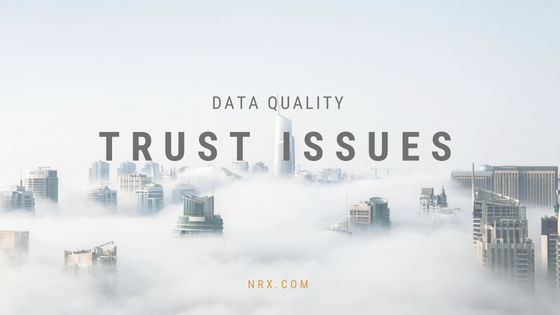Your job requires data that has been compiled by numerous different sources and so a certain amount of trust in the work of others is required. What if you find persisting errors riddled in the data that you require to do your job? Are you still able to trust any of the data, knowing that you can’t count on accurate, high-quality data? Often in the place of high-quality data we tend to rely on our intuition, which as it turns out is much riskier and less reliable than we would like it to be.
Data Quality Score
Your first step is to find out how bad your data really is. You need to determine the prevalence of incorrect data entries. This will allow you to put a number to the cost of poor quality data, which will often help you negotiate for a budget to fix the root cause of the problems. Often managers don’t realize how poor their data quality really is, so quantifying the issue is important.
The Rule of Ten
A great way to quantify the cost of poor quality data is to use the Rule of Ten. According to an HBR article, “it costs ten times as much to complete a unit of work when the data are flawed in any way as it does when they are perfect.” Therefore, if your data health score is 75% data accuracy, then 25% of your data is costing you 10 times more than it should. And, who isn’t looking for ways to save on expenses.
The Friday Afternoon Method
It is a well-known fact that employees are at their lowest productivity levels on Friday afternoons. Instead of sitting at your desk waiting for 5 PM, let’s try to improve the vicious cycle of garbage in-garbage out. Managers ask their team to compile 100 records of data that were created within the past week. This could include records such as work order close out details, BOMs, failure codes, and new nameplate information. The team meets to go over the records and highlights any inaccurate data entries to give a score of X correct entries out of 100 entries. This provides a data health score, a percentage of how likely your data is to be accurate. Teams who use the Friday Afternoon Method will use that percentage as a wake-up call, a benchmark for improvement, and an indicator of areas where data entry systems are failing them.
The Scary Truth
It is not uncommon to have data health scores that are less than 66%. This means that a third of the time, the data imperative to your business is not correct. This has a direct impact on your expenses as well as your ability to meet health, safety, and environmental standards. The data quality experts at HubHead have a vast amount of experience in management of change, data governance and data cleansing solutions. Reach out to our team today and find out how you can improve your data quality score.
https://hbr.org/2017/09/only-3-of-companies-data-meets-basic-quality-standards
Share this article

